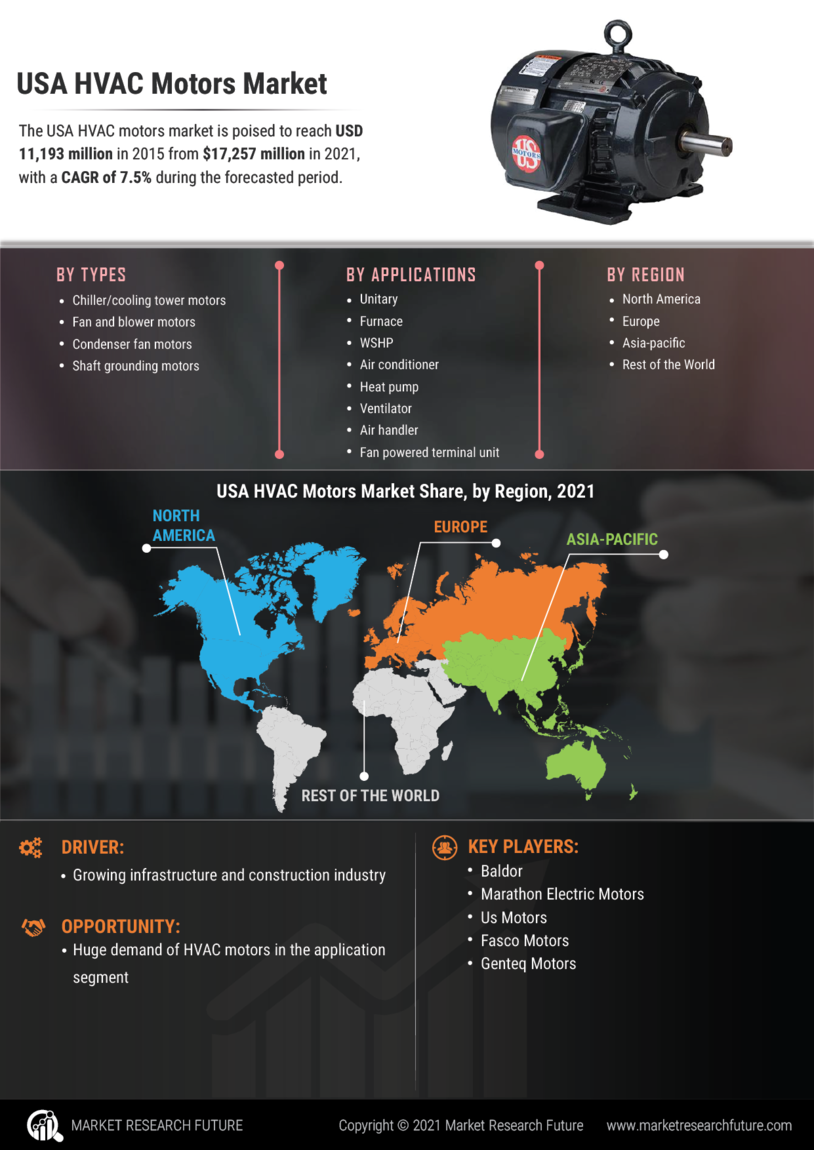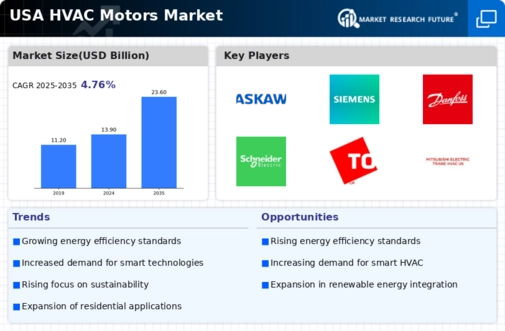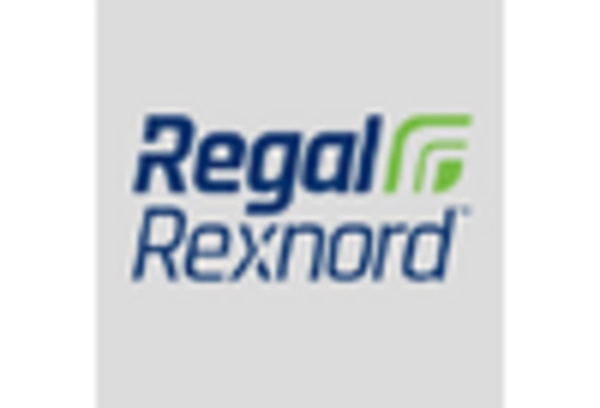Regulatory Compliance and Standards
The USA HVAC Motors Market is increasingly influenced by stringent regulatory compliance and standards aimed at enhancing energy efficiency and reducing environmental impact. The U.S. Department of Energy has established regulations that mandate higher efficiency ratings for HVAC motors, compelling manufacturers to innovate and upgrade their products. This regulatory landscape not only drives technological advancements but also encourages market players to invest in research and development. As a result, the industry is witnessing a shift towards more efficient motor designs, which are expected to dominate the market. The compliance with these standards is likely to create a competitive edge for companies that prioritize energy-efficient solutions, thereby shaping the future of the USA HVAC Motors Market.
Focus on Indoor Air Quality Improvement
The USA HVAC Motors Market is increasingly influenced by a heightened focus on indoor air quality (IAQ) improvement. As awareness of the health impacts of poor air quality grows, consumers and businesses are prioritizing HVAC systems that can effectively filter and circulate clean air. This trend is driving the demand for advanced HVAC motors that support high-efficiency particulate air (HEPA) filters and other air purification technologies. The integration of these systems not only enhances comfort but also contributes to better health outcomes for occupants. As a result, the USA HVAC Motors Market is likely to see a shift towards products that emphasize IAQ, further propelling market growth.
Technological Advancements in Motor Design
The USA HVAC Motors Market is significantly shaped by ongoing technological advancements in motor design and manufacturing processes. Innovations such as brushless DC motors and variable speed drives are becoming increasingly prevalent, offering enhanced performance and efficiency. These advancements not only improve the operational capabilities of HVAC systems but also contribute to energy savings and reduced maintenance costs. Furthermore, the integration of smart technologies into motor design allows for better monitoring and control, aligning with the industry's shift towards automation. As these technologies continue to evolve, they are expected to play a crucial role in driving growth within the USA HVAC Motors Market.
Rising Demand for Energy-Efficient Solutions
The USA HVAC Motors Market is experiencing a notable surge in demand for energy-efficient solutions, driven by both consumer awareness and economic incentives. As energy costs continue to rise, homeowners and businesses are increasingly seeking HVAC systems that offer lower operational costs and reduced energy consumption. According to recent data, energy-efficient motors can reduce energy usage by up to 30%, making them an attractive option for end-users. This growing preference for energy-efficient products is prompting manufacturers to focus on developing advanced motor technologies that meet these demands. Consequently, the USA HVAC Motors Market is likely to expand as more consumers opt for sustainable and cost-effective HVAC solutions.
Increased Construction and Renovation Activities
The USA HVAC Motors Market is benefiting from a rise in construction and renovation activities across residential, commercial, and industrial sectors. As new buildings are constructed and existing ones are upgraded, there is a growing need for efficient HVAC systems that can provide optimal climate control. The construction sector has shown resilience, with significant investments being made in infrastructure development. This trend is likely to bolster the demand for HVAC motors, as builders and contractors seek reliable and efficient solutions to meet the needs of modern buildings. Consequently, the USA HVAC Motors Market is poised for growth as these activities continue to expand.

















Leave a Comment